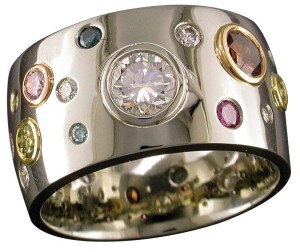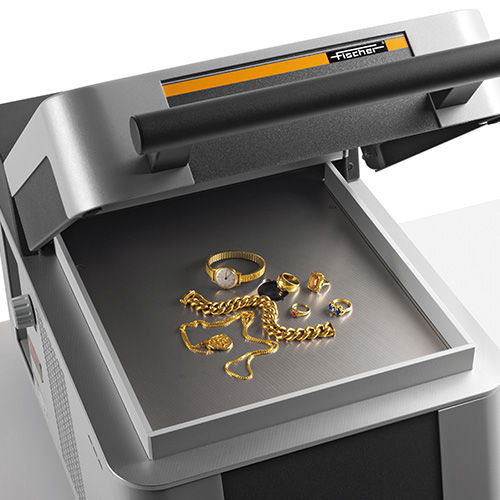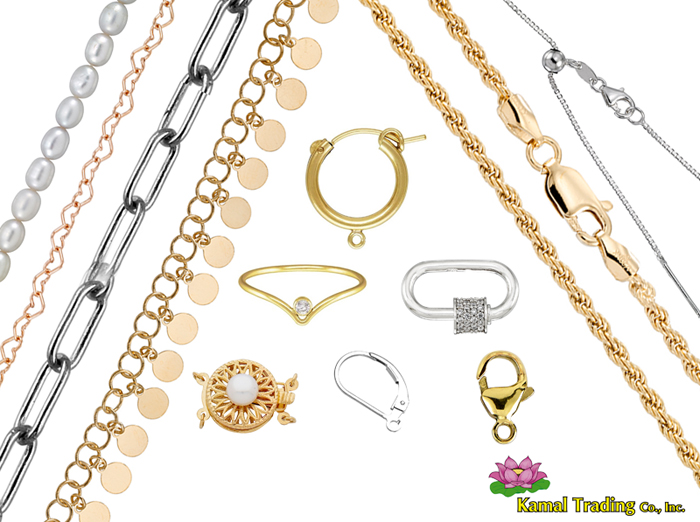Fancy that: Expert tips for designing with fancy colour diamonds
Amping up the colour

The colour of metal used to set fancy diamonds is very important. Generally, it is best to match the colour of the gold to the stone’s colour. I typically use yellow gold (18 karat or even 24 karat) for yellow and brown diamonds and similarly rich rose gold for pink stones, green gold for green, and white gold or platinum for blue. (Electroplating metal with black rhodium can be effective in making the most of black diamonds.)
The ring to the right shows this technique with the larger diamonds bezel-set in gold that matches their colour. Smaller and more intensely coloured stones are flush-set in the white gold of the band.
Similarly, the pink, yellow, and rose gold bezels seen in the photo on the next page highlight the three fancy colour pear shapes in contrast with the high-colour white diamond set in platinum, all surrounded by matte white gold. This ring was a commission for a client for whom the three colours held significance to her faith. It also gave me my first opportunity to work with fancy coloured diamonds of significant size and value.
Each pear shape was approximately three quarters of a carat. The cost per carat of the natural fancy intense purplish-pink stone was more than four times that of the fancy intense yellow diamond. The natural fancy grey blue stone cost five times per carat more than the yellow stone. The ring was made more than 10 years ago and it’s pretty safe to say the stones have increased in value since then. This piece serves as a good example of the importance of certification for coloured diamonds. Without a report from a reputable lab certifying natural colour origin, the sale would probably not have happened.
The setting method can also impact the final appearance of a coloured diamond. You may see commercially produced jewellery where the fancy colour diamond is set in a closed-back setting (or nearly closed), such as a bezel or claw set. This ‘trick’ usually means the diamond is, in reality, much less intensely coloured than it appears in the mount.”¨A fancy light yellow diamond can face up as a fancy intense yellow if there is a sheet of high-carat yellow gold under the culet or just below the stone’s girdle. This is the equivalent to the practice of foil-backing gemstones seen in medieval and Renaissance jewellery (albeit most of the gems were rose cuts with flat backs) and can vastly improve the apparent quality of a stone. When a diamond’s actual colour grade is disclosed, the practice is perhaps valid, but I have seen several examples of clients who have purchased a ring (at auction, online, or while on a cruise) that either did not have a certificate or had one that was ‘less than accurate’ and misrepresented the stone as a better colour than it really was.
Just a brief reminder: Working with fancy colour diamonds requires some care. It is best to avoid soldering with the stone in place, especially in the case of treated stones, since the colour will likely be affected.



